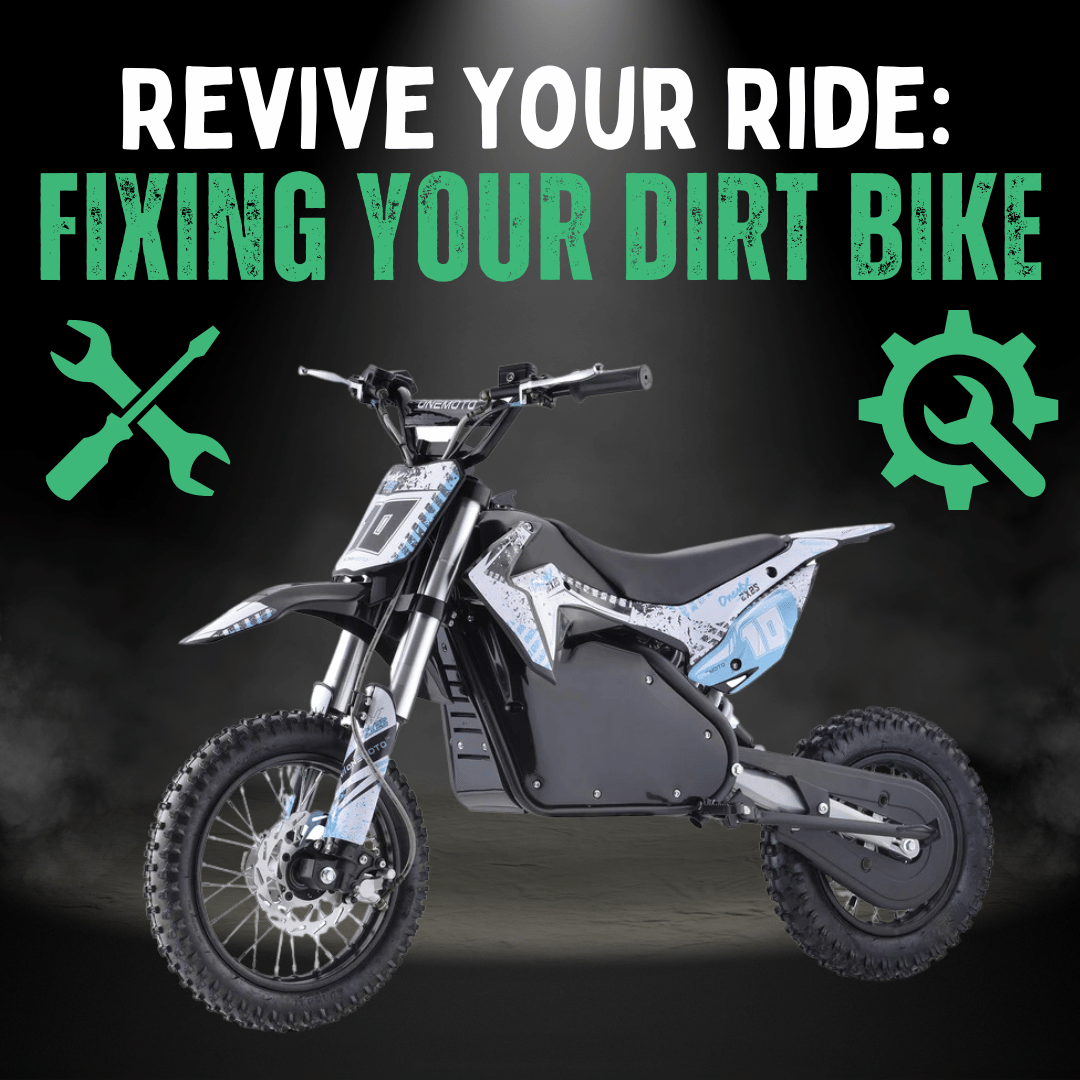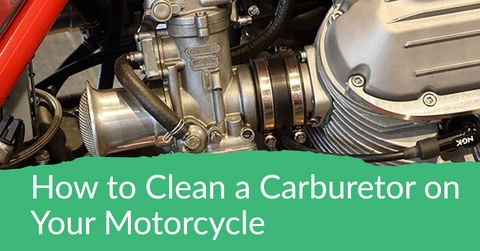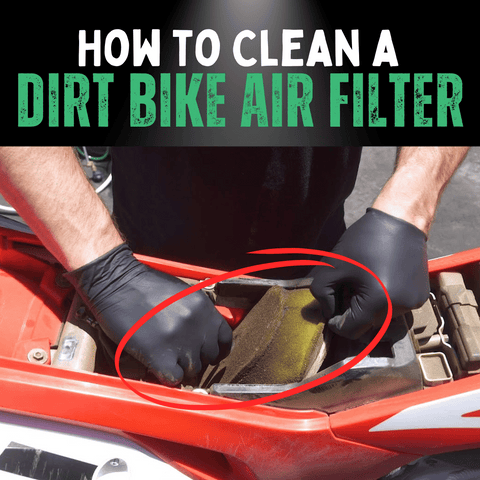
Published: 17 August 2023
Updated: 24 March 2025
The thrill of the open trail—wind in your face, engine humming—is unbeatable.
But when your dirt bike won’t start, that excitement turns to frustration.
Let’s explore the top reasons your bike might be silent and how to get it roaring again.
1. Dirty Carburetor
Issue
The carburetor, your bike’s “lungs,” can clog with dirt, blocking airflow.
Symptoms
Rough idling, stalling, or refusal to start.
Fix
Remove, disassemble, and clean the carburetor thoroughly.
Related: How to Clean a Carburetor on Your Motorbike
2. Clogged Fuel Injector
Issue
Fuel injectors, found in some bikes, can clog, disrupting fuel delivery.
Symptoms
Engine misfires or won’t start.
Fix
Use a fuel injector cleaner, or replace the injector if needed.
3. Dusty Air Filter
Issue
A clogged air filter restricts airflow, like a blocked nostril.
Symptoms
Poor performance or failure to start.
Fix
Clean or replace the air filter.
Related: How to Clean a Dirt Bike Air Filter
4. Poor Carb Jetting
Issue
Improper carb jetting disrupts the fuel-air mix, like a bent straw.
Symptoms
Backfires, sputtering, or no start.
Fix
Adjust the carb jetting—seek a professional if unsure.
Related: Game-Changing Motorcycle Hacks
5. Weak Battery
Issue
A flat battery can’t power the starter.
Symptoms
Slow cranking or no crank at all.
Fix
Charge the battery—replace it if it won’t hold a charge (signs it needs replacing).
Related: Understanding Dirt Bike Batteries
6. No Spark
Issue
No spark means no ignition.
Symptoms
Engine won’t start.
Fix
Check the spark plug and ignition system.
7. Fouled Spark Plug
Issue
A dirty spark plug can’t ignite the fuel mix properly.
Symptoms
Misfires or no start.
Fix
Clean or replace the spark plug.
Related: How Often Should You Change a Motorcycle Spark Plug?
8. Faulty Kill Switch
Issue
A broken kill switch can prevent starting.
Symptoms
No response when starting.
Fix
Inspect and replace the kill switch if faulty.
9. Intake Air Leak
Issue
An air leak disrupts the fuel-air mix, causing starting issues.
Symptoms
Engine runs lean or won’t start.
Fix
Use carb cleaner to find and seal the leak.
10. Low Compression
Issue
Low compression reduces power, like a punctured tire.
Symptoms
No start or weak power.
Fix
Test compression—repair or rebuild the engine if needed.
Maintenance Tips
Regular maintenance keeps your dirt bike reliable and prevents starting issues.
- Fuel System: Use fresh fuel, clean the fuel filter every 20-30 hours, and inspect fuel lines.
- Air Filter: Clean after dusty rides, use quality filter oil, and ensure a sealed airbox.
- Engine Oil: Change oil every 10-15 hours, use the correct grade, and check levels before rides.
- Spark Plug: Inspect every 10-20 hours, replace if worn, and maintain proper gap.
- Battery: Keep charged, clean terminals, and use a tender for storage.
Related: How to Change the Oil and Oil Filter on Your Motorbike
Essential Tools for Dirt Bike Owners
Keep these tools handy for quick fixes:
- Spark Plug Wrench: For inspecting or replacing spark plugs.
- Carburetor Jetting Kit: To fine-tune the fuel-air mix.
- Tire Pressure Gauge: To ensure optimal tire pressure.
- Screwdriver Set: For various adjustments.
When to Seek Professional Help
Some issues require expert attention:
- Deep Engine Problems: Issues with pistons, cylinders, or top-end components.
- Electrical Issues: Complex problems with the ignition or wiring.
- Suspension Tuning: Fine-tuning suspension for optimal performance.
- Persistent Issues: Recurring problems despite troubleshooting.
In Conclusion
Dirt bike starting issues can be simple or complex, but most are fixable with patience.
Stay on top of maintenance, and don’t hesitate to call a pro when needed—the trails are waiting!
FAQ’s
How do I test my dirt bike’s ignition system?
Remove the spark plug, reconnect it to the cap, hold it against the engine, and start the bike—you should see a strong blue spark.
What are signs of a compromised fuel system?
Look for sputtering, stalling, power loss, poor fuel efficiency, or a whining fuel pump sound.
How often should I replace my spark plug?
Replace every 15,000 miles or sooner if you notice misfires or power drops.
How can I tell if my battery is failing?
Slow cranking, rapid discharge, swelling, or failure to hold a charge are key signs.
Can a dirty air filter prevent my bike from starting?
Yes, a clogged air filter restricts airflow, which can stop the engine from starting.
Ready to Ride? 🚀
Loved our 2025 guide on fixing dirt bike starting issues?
Explore more at RiiRoo.com or chat live with us!










Share:
2 Stroke vs 4 Stroke Dirt Bike: Which One Fits Your Ride?
Why Does My Dirt Bike Backfire? - And How to Fix